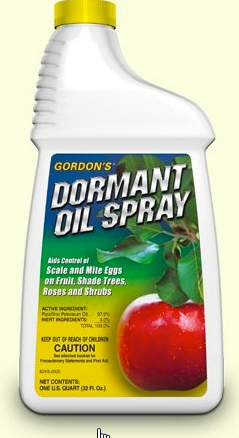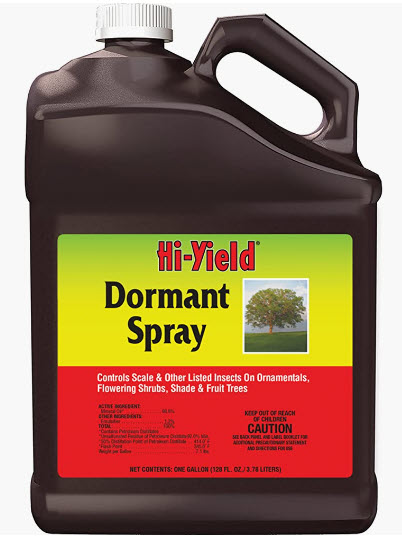Click below to listen to my 2 min. Garden Bite radio show/podcast: Dormant oils – what are they?
What are dormant oils and when and why would you apply them? A listener had asked this question before and today, I thought I’d revisit it as it’s been a few years!

Apples, crabapples, plums, quince and pears all benefit from dormant oil, as do gooseberry and currant bushes.
Other fruit-bearing trees and bushes don’t have any need for this type of oil as they don’t often harbor the same pests.
These oils are effective in controlling certain scales and mites that overwinter as nymphs or adults.
Now what IS a dormant oil? That term refers to WHEN it’s applied more than anything else. Dormant oil sprays are highly refined petroleum products that are mixed with water and applied to fruit trees and shrubs in late winter/ early spring. They destroy pests by suffocating them.

When applied properly, the thin film of oil plugs the pores through which the insect breathes. Proper timing is critical. Dormant oils should be applied in late March or early April before the plants show signs of breaking dormancy. If applied in February or early March they won’t be effective since the bugs aren’t breathing yet!

Be sure to follow all label directions because oil sprays may damage certain plants, including Amur maple, Japanese maple, redbud, and sugar maple. In addition, the foliage (needles) of Colorado blue spruce can be discolored (change from blue to green) by dormant oil applications.
This is a great explanation of what each of the Horticultural Oils (dormant included) are from the University of Nevada Ag Dept. It includes what they do, how to use them and more!
Links to sources and their articles:
